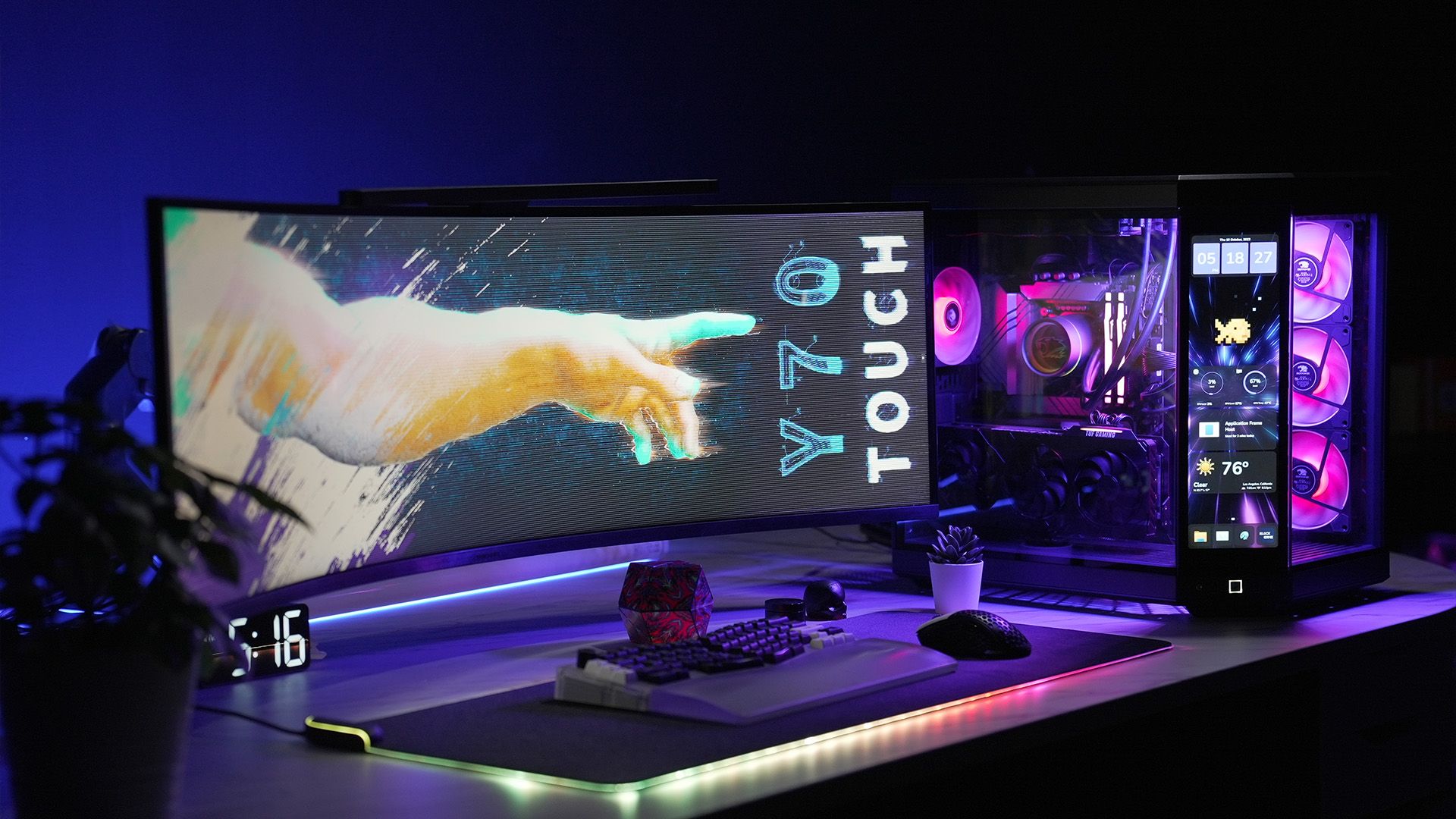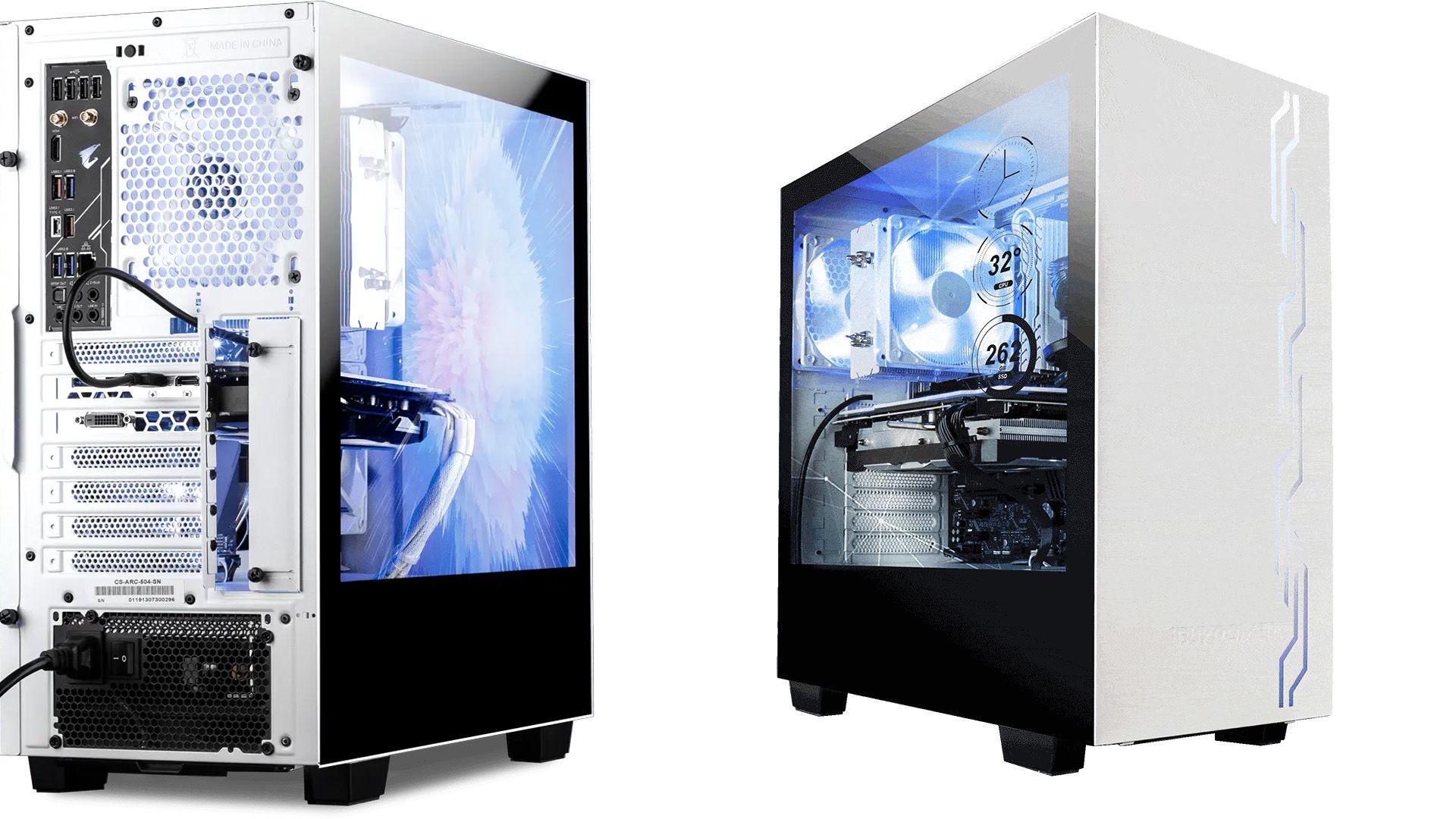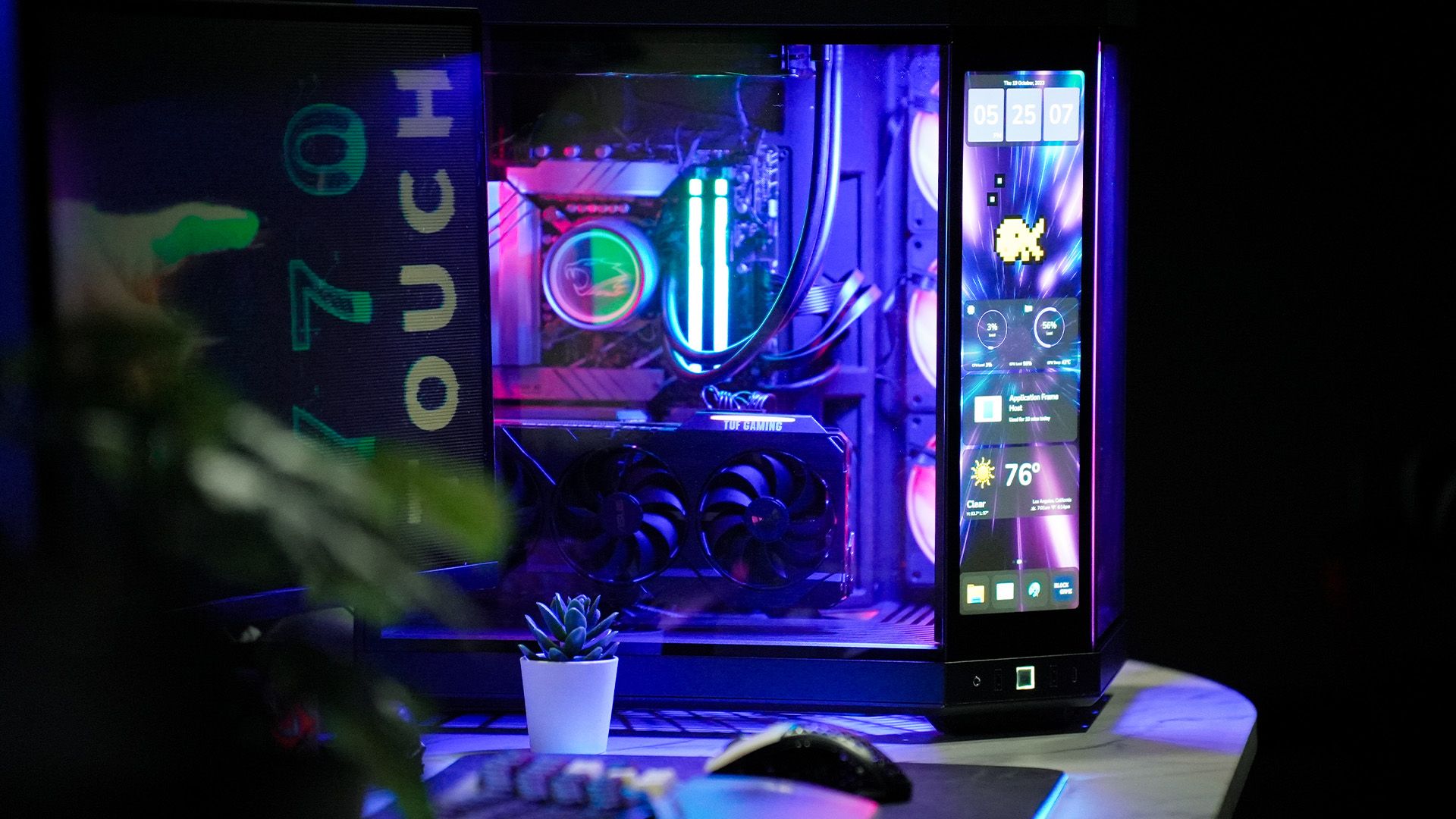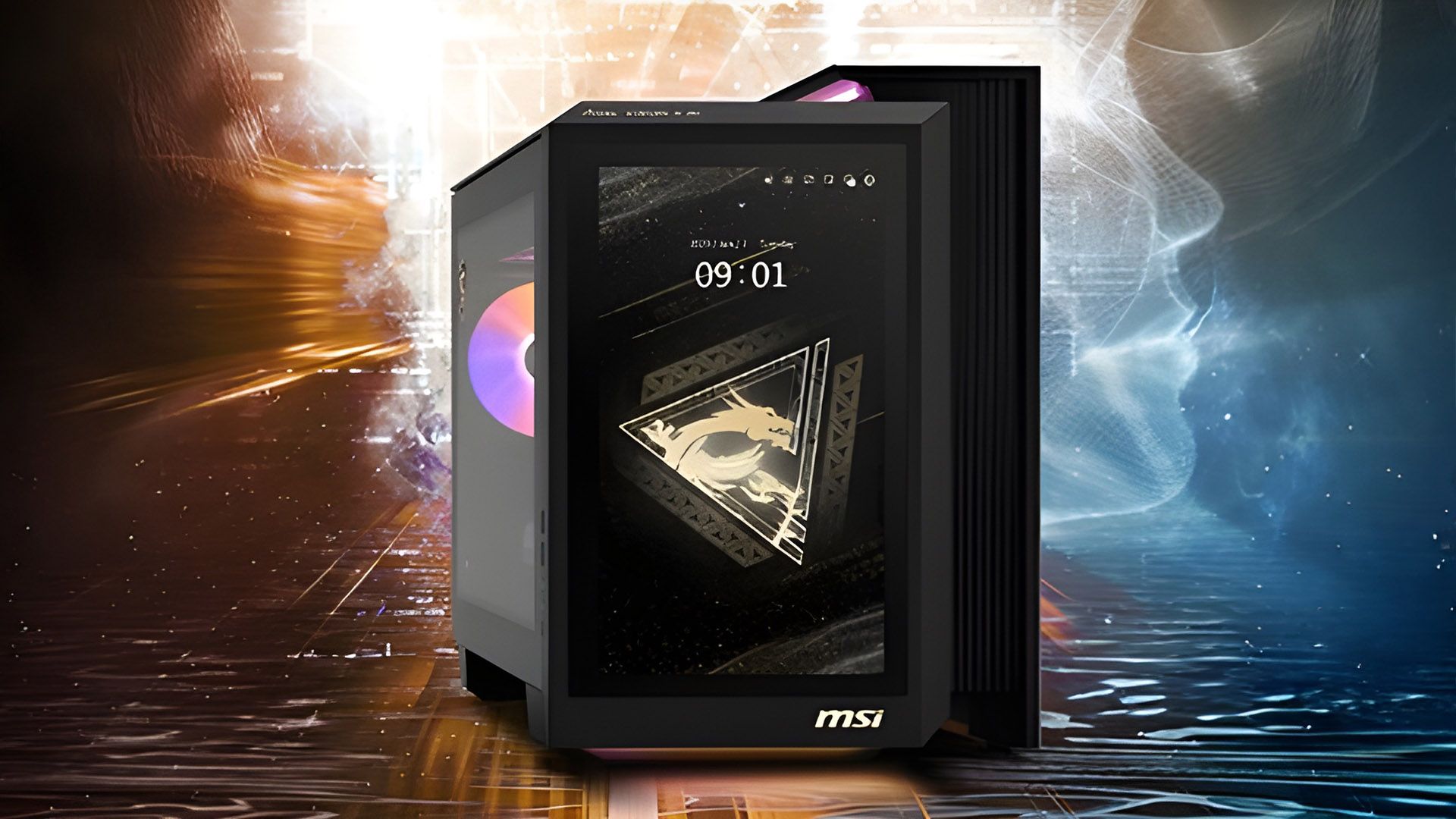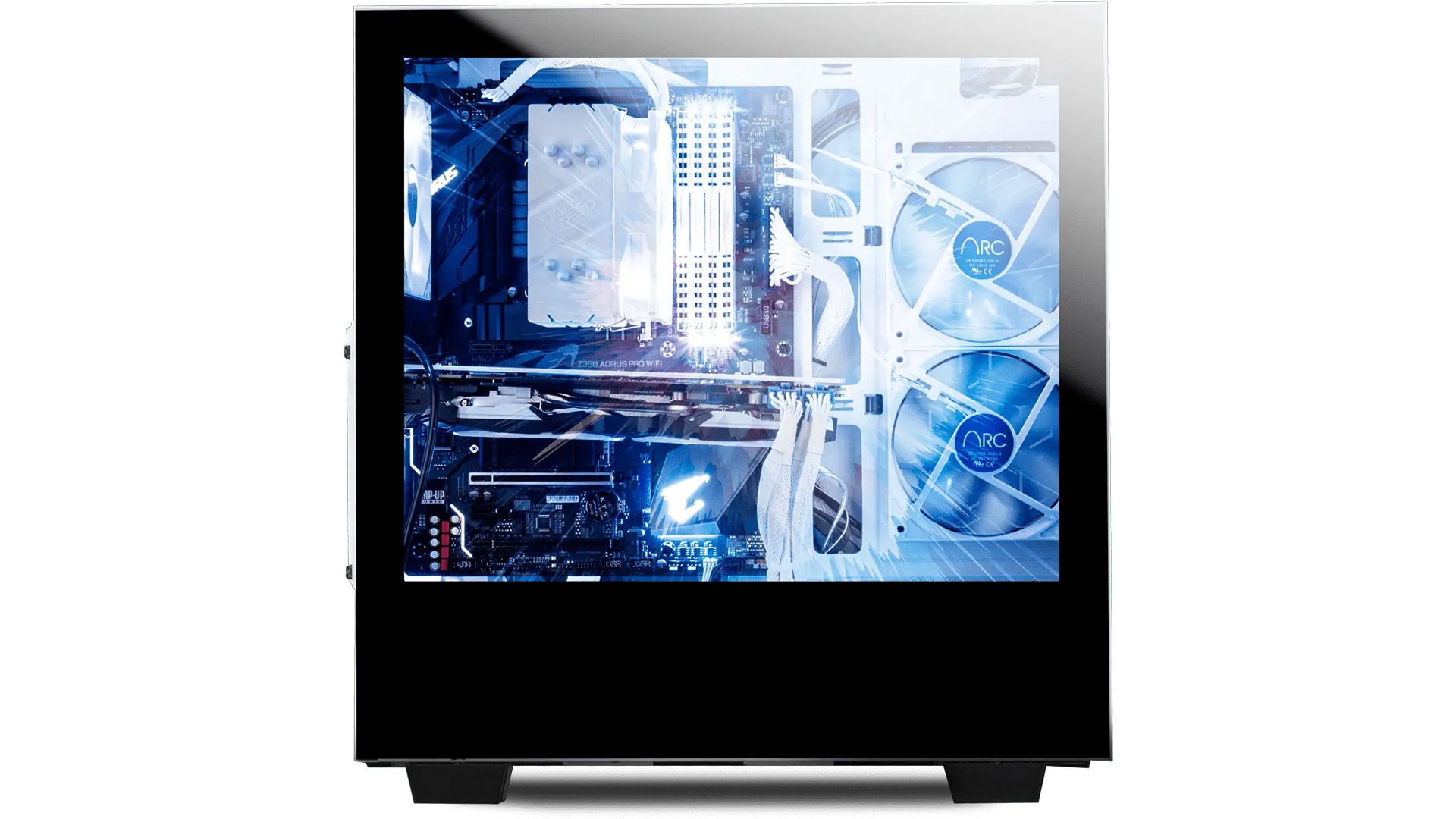Summary
- PC cases are evolving from tempered glass to built-in displays.
- Displays add functionality: monitor your PC stats, show animations, or use it as an additional screen.
- Built-in screens enhance personalization and immersion, but I want manufacturers to keep them simple and useful.
PC cases are starting to see a changing trend, this time away from transparent tempered glass to built-in displays. While case design has been fairly stagnant for the past few years, built-in displays could be the next evolution of the custom PC setup, and I love it.
Screens Are the Logical Next Step in PC Case Evolution
PC cases have gone through many iterations. We started with big metal boxes, then we put plexiglass windows on the side. From there, tempered glass side panels were introduced, and eventually we began putting glass everywhere.
Now, companies are beginning to put screens in various corners of their PC cases. MSI, for instance, just put one in place of its front panel. The HYTE Y70 Touch Infinite is one such case, with an integrated touchscreen on the corner. iBuyPower has its Snowblind S case that features a full-blown see-through display on the side. And we’re just getting started.
Putting screens inside your PC really began to become mainstream when companies started putting displays on their liquid coolers. This trend has continued, and I believe the next iteration is to put screens on PC cases.
PC Case Screens Deliver Both Function and Form
When I first started thinking about a screen on my PC case, I was a little unsure about it. But, the more time I spent considering it, the more I realized they’re so multi-functional, I can’t wait to have one.
The first thing that comes to mind when thinking about a screen on a PC case is monitoring PC components like the water temperature of your AiO cooling, processor temperature, RAM usage, GPU usage, and the like. However, that’s just where it begins.
While the Snowblind S case is great for monitoring PC stats, it can also be used for animations of any kind. Similar to how the LCDs on coolers can show a GIF, you can do the same with the side of the Snowblind S case. This means that you could easily customize the look and feel of your case on a day-by-day, or even hour-by-hour basis.
However, stepping up to something like the HYTE Y70 or MSI’s new desktop gives you a full-blown monitor. Instead of just a transparent panel, these displays are full-color (and even touch-sensitive.) Having a function like that turns your case from just a case into a secondary display.
You can use a screen like that to throw your Twitch chat on when livestreaming, or even keep a document open while on a Zoom call. The possibilities of a full-color screen are really endless here, especially one that offers touch input.
Things like the Snowblind S are nice and all, but what I really want is what MSI and HYTE are bringing to the table. Having my PC case on my desk with a built-in secondary screen feels like a pro move in all the right ways. It would give me extra screen real estate when in meetings or when playing games, but it also let me have a custom graphic on it when shooting videos or taking pictures of my desk and peripherals.
Don’t Think of It as Just a Screen
I normally think of screens as, well, screens. I’m sure you do too. But, with a screen on your PC, a whole new world opens up: customization. Yes, we can currently customize the look of our wallpapers on our computers, but screens on PCs are different.
Take the HYTE Y70 for example. Since the screen is on the angled portion of the case, it’s a ratio and style that no other normal display comes in. Because of this, you have the ability to make it look like fish are swimming in your case. Or there’s a monster peeking around the corner. Or any number of other things.
With a screen built into the side of your case, the customization possibilities are endless. It’s a way to change your entire PC’s look and feel, not just a way to see some extra information.
Putting screens on our PCs will truly bring personalization to the next level. Before, we were limited to just colors and components for personalizing the look of our setup. But, with screens, you can really make your setup look and feel exactly how you want.
While both of the main cases I’ve mentioned here from HYTE and MSI feature touchscreens, I feel they’re not entirely necessary. The touch experience can definitely add an extra level of immersion, but it feels like it’s just an added feature, and not something I need. Let me explain.
Really, at the end of the day, I don’t plan to reach over and touch my case’s display all that often. There is a screen which can show me information (or have a cool GIF playing). It’s not for me to touch often.
However, when I’m in a Google Meet meeting with a client, or if I’m streaming a game, being able to reach over and scroll with my finger could be useful. Or it could be annoying and I just end up using my mouse anyway.
Adding touch adds extra complexity and cost, and I think that PC case makers should leave it off, or leave it as an option.
Let’s Keep It Sensible, Though
MSI replaced the entire front panel of its latest case from CES 2025 with a screen. HYTE replaced the corner piece of tempered glass with a screen in the Y70. Both of these displays can’t be turned transparent, and will always block the view of what’s behind them.
In the locations that MSI and HYTE chose, that’s perfectly fine. However, case manufacturers, please don’t replace my entire side panel with a screen I can’t see through. iBuyPower replaced the entire side panel of the Snowblind S case with a screen, but it’s transparent and allows me to still see my PC components. If the side panel of my PC becomes a case, at least let me turn it off or make it transparent, so I can see my build.
If the panel has to be placed on the side, a great position for it would be the power supply shroud. This is typically an unused space in most cases, displaying nothing more than a logo generally. So, replacing the side with a screen would make sense here.
Just leave my side window alone and let me still see my PC components, okay?
Screens on cases aren’t the only thing that could be changing the way your setup functions. Dell recently announced a monitor that has a built-in beamforming head-tracking sound bar that I absolutely love the idea of.


